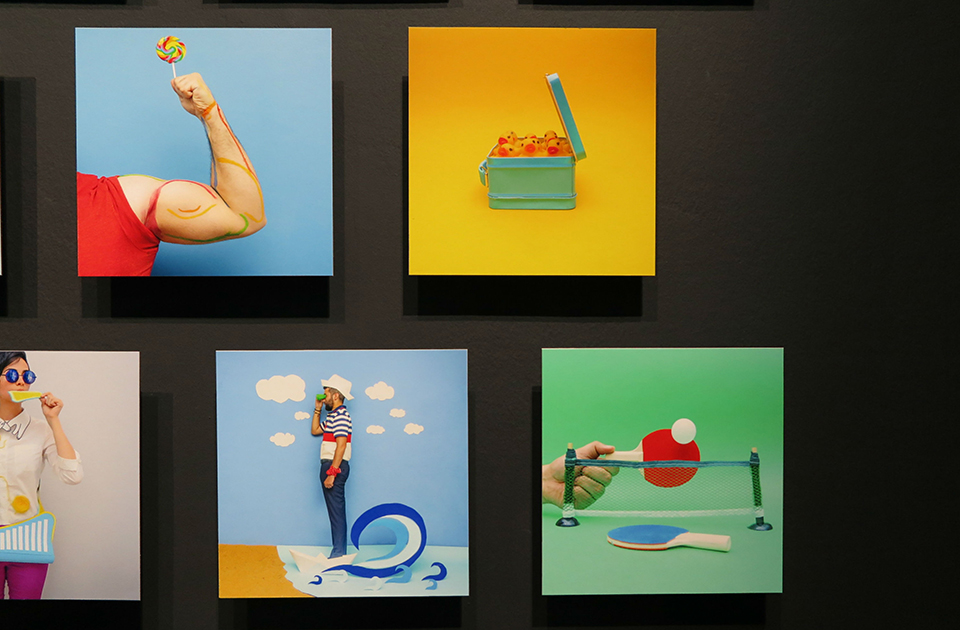An exhibition at the Arab World Institute in Paris (IMA) showcases a section of the Second Biennial of Photography in the Contemporary Arab World, organised by the IMA and the European House of Photography (MEP).
The exhibition, which runs until 12 November, features 50 photographers and is held across six venues in Paris in addition to IMA and MEP; Galerie Binome, Galerie Thierry Marlat, Galerie Photo12, Galerie Clementine de la Feronniere, Cité Internationale des Arts, and the Mairie (Town Hall) of Paris’ 4th District.
This edition is focusing on two countries, Tunisia and Morocco, and is dedicated to the memory of Moroccan photographer Leila Alaoui, who died around the time of the first edition while her portraits were on display at MEP.
The exhibitions statement explains the curators’ interest in Tunisia as this edition’s focus and how the images from and about the Arab World have drastically changed over the past few years.
“There was nothing romantic about the revolutions that a great number of countries of the region have gone through. However, the fascination they have generated has created a contagious optimistic movement that has fuelled a fabulous artistic growth, particularly in the field of photography. Tunisia was the first country to initiate this renewal and [IMA] wishes to honour and celebrate these photographers,” the statement reads.

(Photo: Soha Elsirgany)
The Biennale aims to present diverse perspectives on the Arab World through an eclectic selection of photographers who engage with their surroundings differently, and collectively provide “stories and chronicles through portraits and landscapes that depict the constant mutation of the Arab world between fantasy and reality.”
The eight exhibition’s venues are displaying works by photographers who are either Arabs in their native countries, Arabs working abroad, or foreign photographers whose work deals with the Arab World.
A total of 20 photographers are showcased at the IMA, including two Egyptians.
Mectoub by French photographer Scarlett Coten, who lives and works in the USA, reflects on masculine identity in the Arab world through four photos of men from Tunis, Egypt and Jordan. Coten hopes to demystify stereotypes and introduce new definitions of masculinity.

(Photo: Soha Elsirgany)
Mouna Karray, a Tunisian photographer working in Paris, presents a series titled Noir. The work looks into the construction of identity and memory in relation to social and economic contexts.
“The body is presented as both the prisoner and a creator, and the ‘photographic act’ turns the camera’s shutter into a potential liberating weapon.”

(Photo: Soha Elsirgany)
Tunisian photographer Jellel Gasteli’s ‘Les Cernets de Marrakech et de Tanger’ is a work in progress combining photography and literature, inspired by Abdelwahab Meddeb’s unpublished manuscripts about cities, including several Arab cities.

(Photo: Soha Elsirgany)
In The Last Tashahhud, Saudi Arabian photographer Moath Alofi captures a series of abandoned mosques on the road to Medina.
Displayed on lightboxes placed on the floor, the compelling display relays Alofi’s intention to portray the mosques as if in an open-air museum, questioning the fate of these places, and passing on this heritage for future generations.

(Photo: Soha Elsirgany)
Spanish photographer Roger Grasas, who works in Barcelona and Riyadh, directs his camera towards the desert in his documentary series Min Turab.
The title, which means “from dirt” in Arabic, “creates a conceptual portrait of globalisation and the urbanisation of monarchies, while investigating the mutation of desert spaces.”

(Photo: Soha Elsirgany)
Karim El-Hayawan from Egypt presents his video project ‘Cairo Cacophony,’ where he captures the rhythm and vibes of Cairo’s streets through a collection of photos he took on Saturday morning walks in Cairo.
The photos are presented as a split-screen video, accompanied by Egyptian pop, classical or contemporary music to represent various aspects of visual and auditory experiences in Cairo.

(Photo: Soha Elsirgany)
Syrian-born photographer Jabber Azmeh, who works in Qatar, looks at spaces resulting from the mass migrations and chaotic management of erratic powers in his series “Border-Lines.” By staging compositions, he reflects on the absurdity of the war in Syria and makes visible the consequences while poking fun at trying to manage it.

(Photo: Soha Elsirgany)
Egyptian photographer Ahmad El-Abi presents a lighter subject matter in his project Alphabet.
The work is a series of 28 vibrant, whimsical studio photos, each depicting an interpretation of the 28 letters of the Arabic Alphabet through compositions comprised of everyday objects and sometimes featuring people.

(Photo: Soha Elsirgany)

(Photo: Soha Elsirgany)
For more arts and culture news and updates, follow Ahram Online Arts and Culture on Twitter at @AhramOnlineArts and on Facebook at Ahram Online: Arts & Culture
Short link: